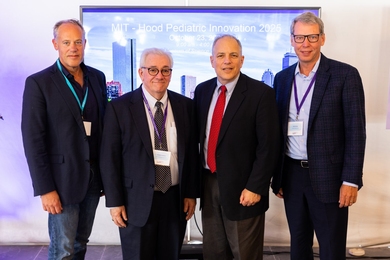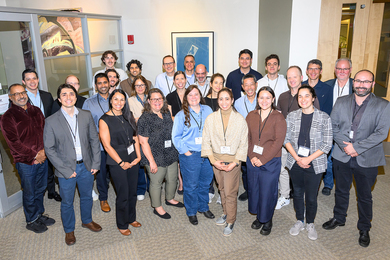In work that could lead to superior varieties of nylon and other commercially important polymers, MIT engineers have developed the first probe that can detect the motion of molecules in these materials as they are being stretched.
"We want to understand on a molecular level what allows a polymer to stretch and deform," said Associate Professor Karen K. Gleason of the Department of Chemical Engineering, who gave a talk on the work on August 25 at the national meeting of the American Chemical Society.
Understanding such molecular details "will allow us to design these materials from a fundamental viewpoint," which could in turn improve their mechanical properties, Professor Gleason said. Historically, polymeric materials with specific properties have been created by trial and error with little knowledge of exactly why a given formulation works.
The new probe combines a stretching device with the electronics for nuclear magnetic resonance (NMR) spectroscopy. NMR probes for exploring polymers -- materials composed of chains of repeating subunits -- are common. Until now, however, all focused on a given material before or after it was stretched, or put under stress. The MIT instrument is the first to detect what's happening during the process.
"We're trying to capture the motion of the polymer while it's actively being deformed, rather than looking at a 'dead' sample, or one in which deformation -- and motions -- have ceased," Professor Gleason said.
The stretching device and polymer sample, inside a tube about three feet long by three inches in diameter, are placed within the NMR spectrometer's superconducting magnet. As the polymer is pulled, NMR captures its molecular motions. "These two techniques have been used individually to study polymers, but until now they haven't been used together," Professor Gleason said.
The researchers are currently using the probe to study man-made polymers like nylon. Professor Gleason noted, however, that it might have applications to different systems. For example, other researchers might want to look at active changes in biopolymers like cartilage.
Her colleagues in the work are Robert E. Cohen, the Raymond A. and Helen E. St. Laurent Professor of Chemical Engineering, and chemical engineering graduate student Leslie S. Loo. The research is part of an interdisciplinary research group at MIT on the rational design of polymeric materials led by Professor Mary Boyce of the Department of Mechanical Engineering, Professor Gleason noted.
The work is sponsored by the NSF through MIT's Center for Materials Science and Engineering.
A version of this article appeared in the September 1, 1999 issue of MIT Tech Talk (Volume 44, Number 4).





